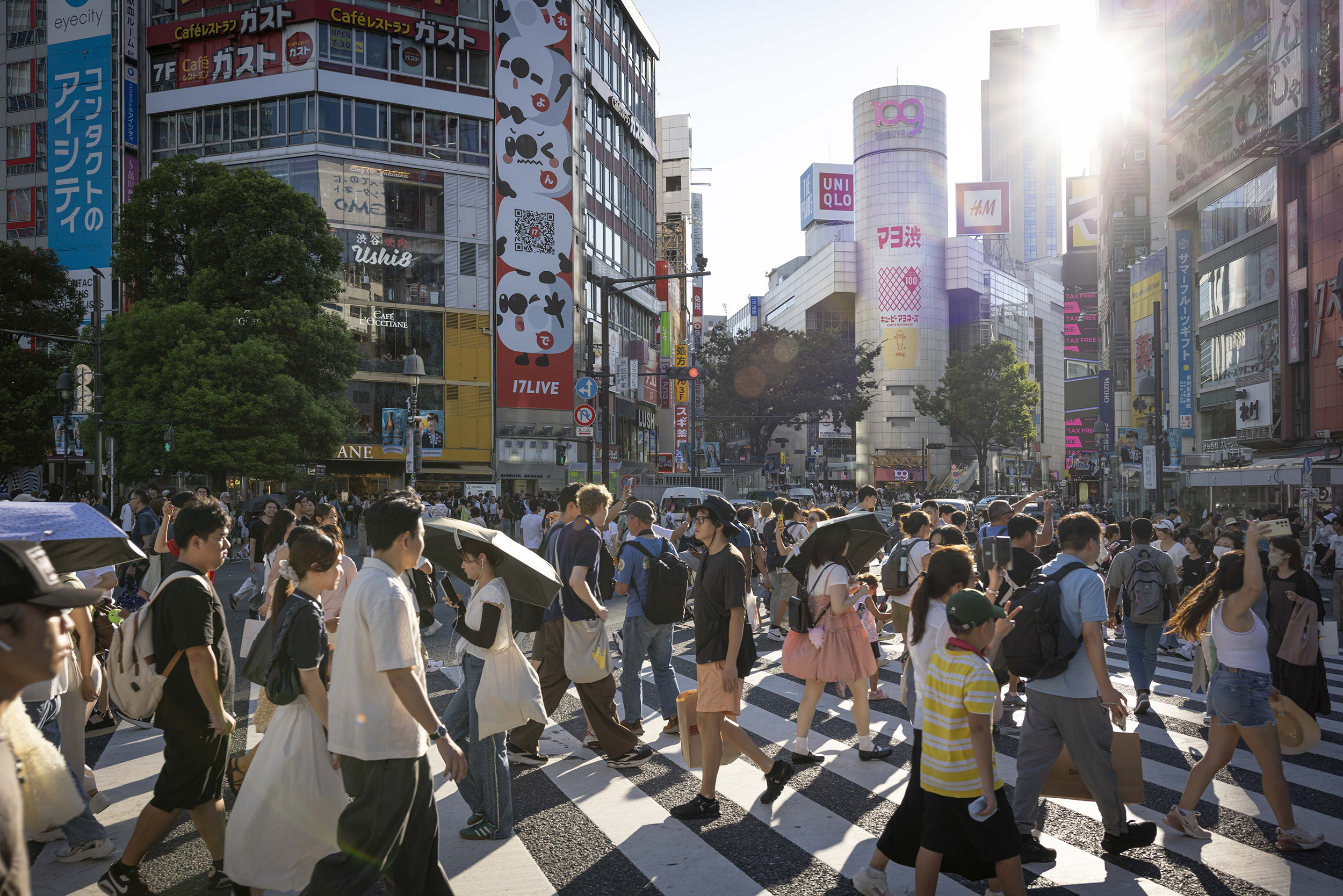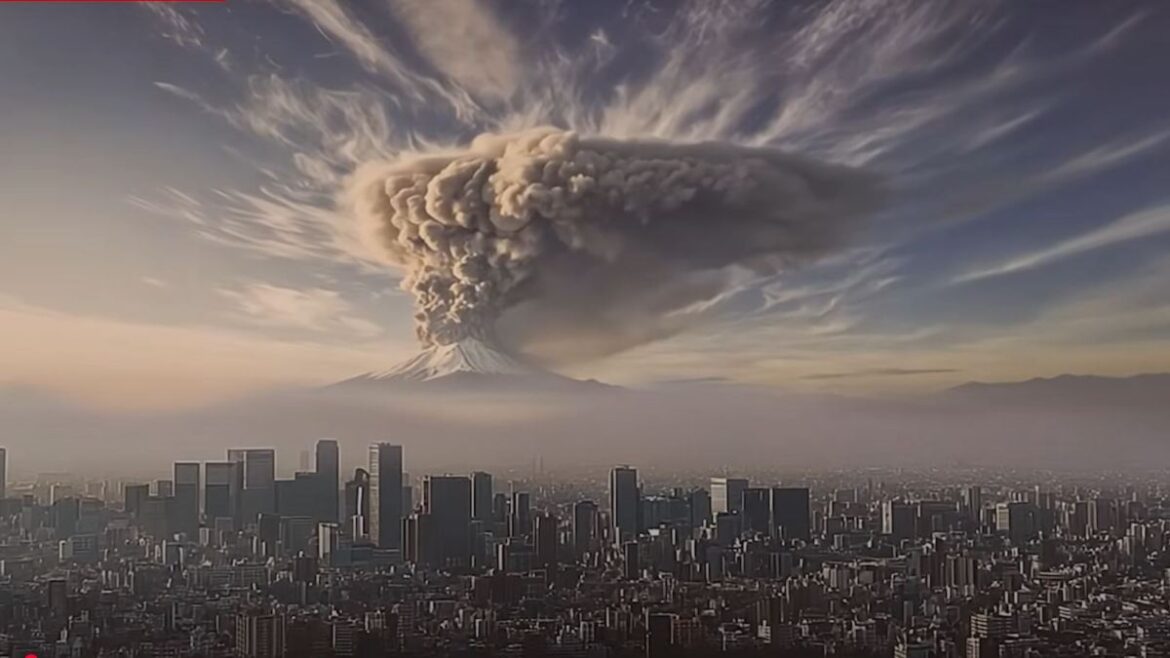It resembles a nuclear explosion, followed by the darkness and cold of the ensuing winter. But rather than what could happen, this is a depiction of what is inevitable — the future eruption of Mount Fuji, and the disastrous consequences for Tokyo.
The Japanese authorities have released computer-generated videos depicting the eruption of the sacred mountain and the devastating effect it could have on one of the most densely populated areas in the world. They are a reminder of what even disaster-conscious Japanese find easy to forget — that the world’s largest city is within range of a large and highly active volcano.
“The moment may arrive without any warning,” warns the film, created with generative AI by the Tokyo metropolitan government. “Since we do not know when Mount Fuji will erupt and blanket us with volcanic ash, to protect ourselves and our loved ones we need to arm ourselves with facts.”
The film shows a frightened woman covering her face with her hands as she watches a grey mushroom-shaped cloud rising above the mountain on a screen in Tokyo’s Shibuya district. Mount Fuji is 60 miles from the centre of Tokyo, whose broad metropolitan area has a population of 37 million.

In March an expert panel said a full-scale eruption could generate 490 million cubic metres of ash — some ten times the amount of debris created by the devastating earthquake and tsunami in 2011. Volcanic ash from such an explosion could reach Tokyo in little more than an hour.
As well as darkening the skies, sharp particles of ash can harm the eyes and lungs and scratch glass. “Volcanic ash is made up of fine, jagged particles,” the video warns. “Its unique qualities pose many hazards to health and society.”
Large amounts of ash would clog up the wheels of vehicles and machinery and potentially choke drains and sewers. If there was rain at the time of the eruption, then ash would short circuit electrical wires, causing widespread blackouts and the failure of subway trains and water pumps.

Ordinary two-wheel drive cars would be useless if ash fall exceeded 10cm, or 3cm in rain. Much public transport would fail and water could become contaminated. Tokyo residents were advised to stockpile three days’ worth of supplies in preparation for an eruption.
• Japan tells citizens how to cope if Mount Fuji erupts
Over the centuries, Mount Fuji has become an artistic icon, a religious site for the Shinto religion, and an international tourist attraction — local governments have begun charging an entrance fee of ¥4,000 (£20.50) to discourage tourists. The slopes are overwhelmed by rubbish, human waste and pedestrian traffic jams.
The biggest eruption, and the most recent, was in 1707, and expelled 850 million cubic metres of stone, sand, ash and black smoke over 16 days. Since then, villages around the mountain have grown into medium-sized towns, and Tokyo and the satellite cities of Yokohama and Kawasaki have merged into one of the biggest megalopolises in the world.

Mount Fuji is 60 miles from Tokyo
GETTY IMAGES

STANISLAV KOGIKU/GETTY IMAGES
In a video by Japan’s Cabinet Office, Toshitsugu Fujii, of the Mount Fuji Research Institute, warns that an eruption is inevitable.
“Mount Fuji used to be a very active volcano,” he said. “On an average, it erupted every 30 years. The fact that over the past more than 300 years, it remained very quiet is abnormal. The next eruption could occur at any time.”


AloJapan.com